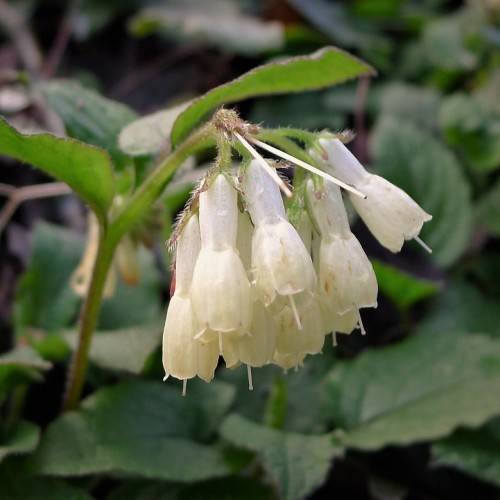
comfrey
Symphytum grandiflorum
Cycle:
Herbaceous Perennial
Watering:
Average
Hardiness Zone:
5 - 8
Flowers:
Flowers
Sun:
Full sun,part shade
Leaf:
Yes
Growth Rate:
Low
Maintenance:
Low
Poisonous To Humans:
Yes
Poisonous To Pets:
Yes
Invasive:
Yes
watering
Comfrey (Symphytum grandiflorum) should be watered often because it is an herb that thrives in moist conditions, although it is very drought resistant. Watering should be done on a weekly basis, providing 1 to 2 inches of water per week. Make sure to give the plant a thorough soaking each time, as the root system is shallow and will dry out easily. In hot weather or in locations with high evaporation, water more frequently. Avoid overwatering, however, as this can lead to root rot.
sunlight
Comfrey (Symphytum grandiflorum) is best grown in full sun, meaning that it needs at least 6 to 8 hours of direct sunlight every day. This type of plant will benefit from additional sunlight if it is available, especially during the summer months when the plant is actively growing. During the winter months, Comfrey can handle some light shade, as long as it still receives at least 4 to 6 hours of direct sunlight. Equally important is the right kind of light; full spectrum of solar radiation. Avoid growing comfrey in north facing locations, as these areas tend to receive less sunlight.
pruning
The best time to prune comfrey (Symphytum grandiflorum) is in early summer after the flowers have died down. This plant produces prolific root growth and develops new leaves from the base. It should be pruned back to the ground once a year to promote fresh shoots. For heavily congested plants, it is best to cut back up to 2-thirds of their height. This will allow the plant to take on more of a compact, rounded shape. You can also remove any dead, dying or overcrowded stems to help keep the plant healthy. Generally, larger, more established comfrey plants will require less work than younger plants. Simply removing the main stem and a few additional stems from the middle of the plant can help maintain a healthy appearance. If the plant is well established and in good health, it can be left to grow more freely, with minimal pruning. Overall, the amount of pruning required for comfrey will depend on the condition and growth of the plant. However, annual pruning will help keep the plant healthy and vibrant.
